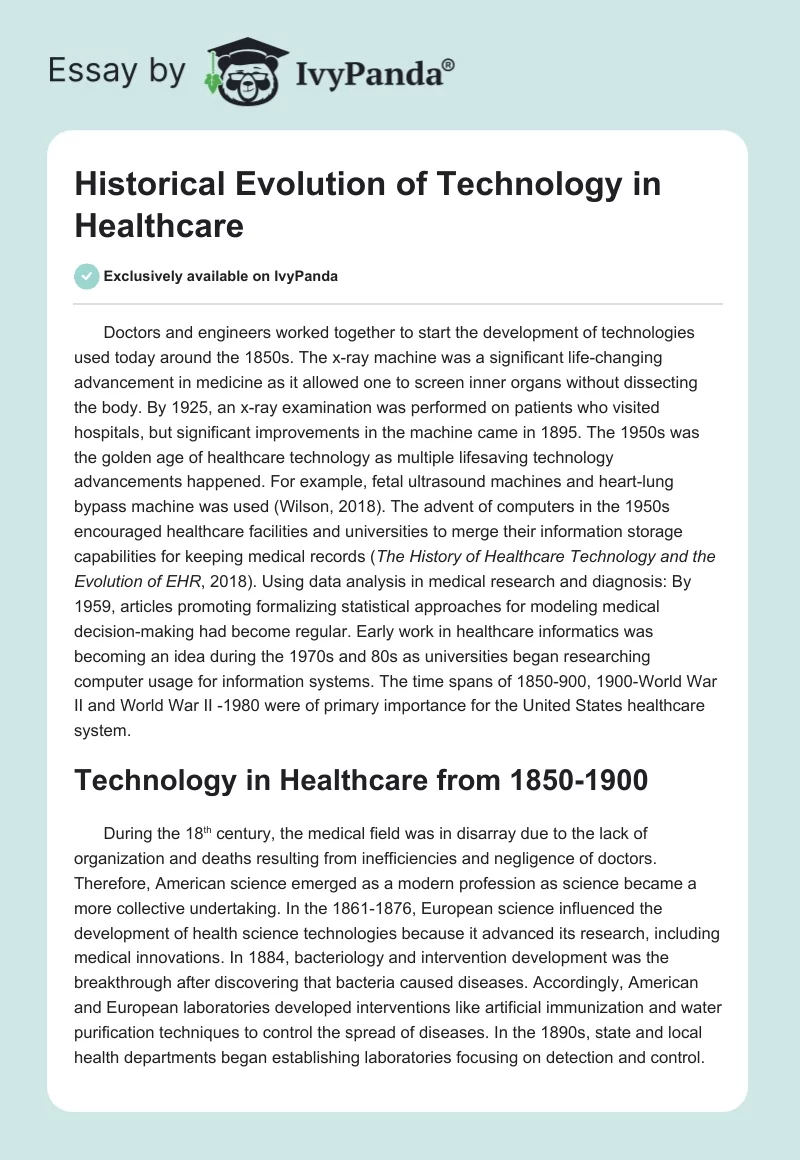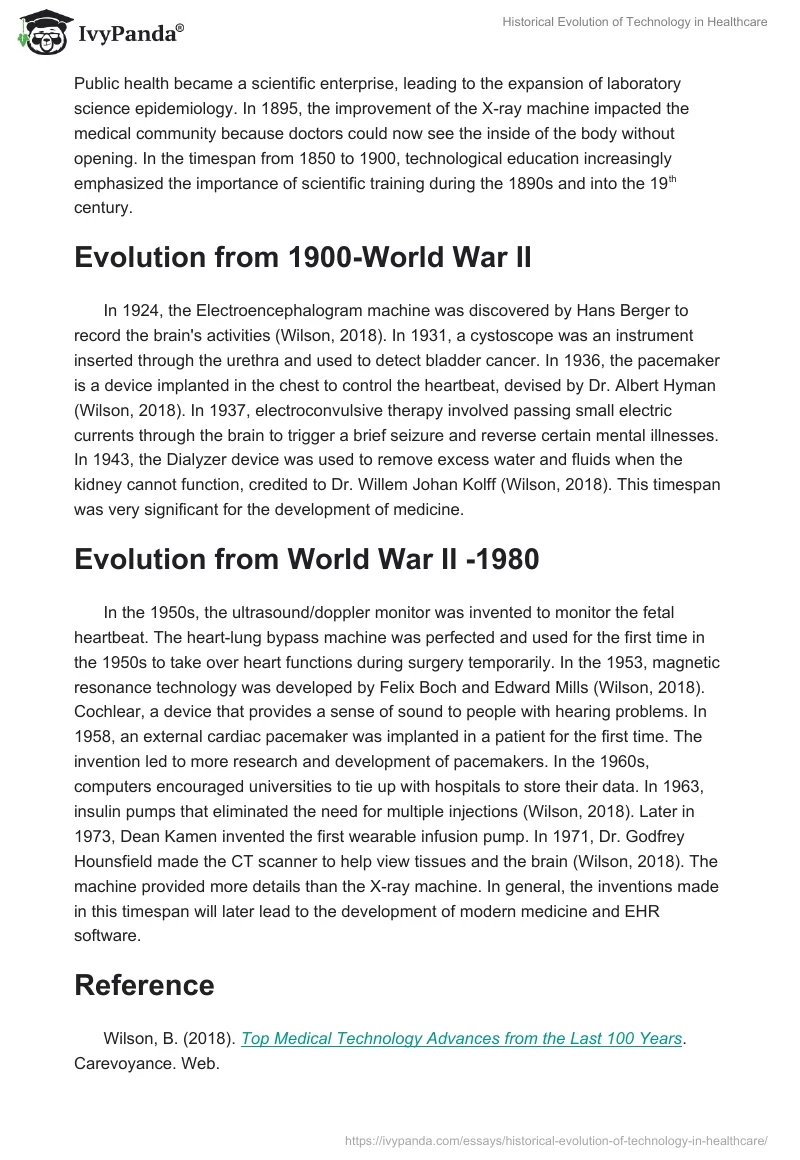Doctors and engineers worked together to start the development of technologies used today around the 1850s. The x-ray machine was a significant life-changing advancement in medicine as it allowed one to screen inner organs without dissecting the body. By 1925, an x-ray examination was performed on patients who visited hospitals, but significant improvements in the machine came in 1895.
The 1950s was the golden age of healthcare technology as multiple lifesaving technology advancements happened. For example, fetal ultrasound machines and heart-lung bypass machine was used (Wilson, 2018). The advent of computers in the 1950s encouraged healthcare facilities and universities to merge their information storage capabilities for keeping medical records (The History of Healthcare Technology and the Evolution of EHR, 2018). Using data analysis in medical research and diagnosis: By 1959, articles promoting formalizing statistical approaches for modeling medical decision-making had become regular. Early work in healthcare informatics was becoming an idea during the 1970s and 80s as universities began researching computer usage for information systems. The time spans of 1850-900, 1900-World War II and World War II -1980 were of primary importance for the United States healthcare system.
Technology in Healthcare from 1850-1900
During the 18th century, the medical field was in disarray due to the lack of organization and deaths resulting from inefficiencies and negligence of doctors. Therefore, American science emerged as a modern profession as science became a more collective undertaking. In the 1861-1876, European science influenced the development of health science technologies because it advanced its research, including medical innovations. In 1884, bacteriology and intervention development was the breakthrough after discovering that bacteria caused diseases. Accordingly, American and European laboratories developed interventions like artificial immunization and water purification techniques to control the spread of diseases. In the 1890s, state and local health departments began establishing laboratories focusing on detection and control. Public health became a scientific enterprise, leading to the expansion of laboratory science epidemiology. In 1895, the improvement of the X-ray machine impacted the medical community because doctors could now see the inside of the body without opening. In the timespan from 1850 to 1900, technological education increasingly emphasized the importance of scientific training during the 1890s and into the 19th century.
Evolution from 1900-World War II
In 1924, the Electroencephalogram machine was discovered by Hans Berger to record the brain’s activities (Wilson, 2018). In 1931, a cystoscope was an instrument inserted through the urethra and used to detect bladder cancer. In 1936, the pacemaker is a device implanted in the chest to control the heartbeat, devised by Dr. Albert Hyman (Wilson, 2018). In 1937, electroconvulsive therapy involved passing small electric currents through the brain to trigger a brief seizure and reverse certain mental illnesses. In 1943, the Dialyzer device was used to remove excess water and fluids when the kidney cannot function, credited to Dr. Willem Johan Kolff (Wilson, 2018). This timespan was very significant for the development of medicine.
Evolution from World War II -1980
In the 1950s, the ultrasound/doppler monitor was invented to monitor the fetal heartbeat. The heart-lung bypass machine was perfected and used for the first time in the 1950s to take over heart functions during surgery temporarily. In the 1953, magnetic resonance technology was developed by Felix Boch and Edward Mills (Wilson, 2018). Cochlear, a device that provides a sense of sound to people with hearing problems. In 1958, an external cardiac pacemaker was implanted in a patient for the first time. The invention led to more research and development of pacemakers. In the 1960s, computers encouraged universities to tie up with hospitals to store their data. In 1963, insulin pumps that eliminated the need for multiple injections (Wilson, 2018). Later in 1973, Dean Kamen invented the first wearable infusion pump. In 1971, Dr. Godfrey Hounsfield made the CT scanner to help view tissues and the brain (Wilson, 2018). The machine provided more details than the X-ray machine. In general, the inventions made in this timespan will later lead to the development of modern medicine and EHR software.
Reference
Wilson, B. (2018). Top Medical Technology Advances from the Last 100 Years. Carevoyance. Web.
The History of Healthcare Technology and the Evolution of EHR. (2018). BaytechIT. Web.


